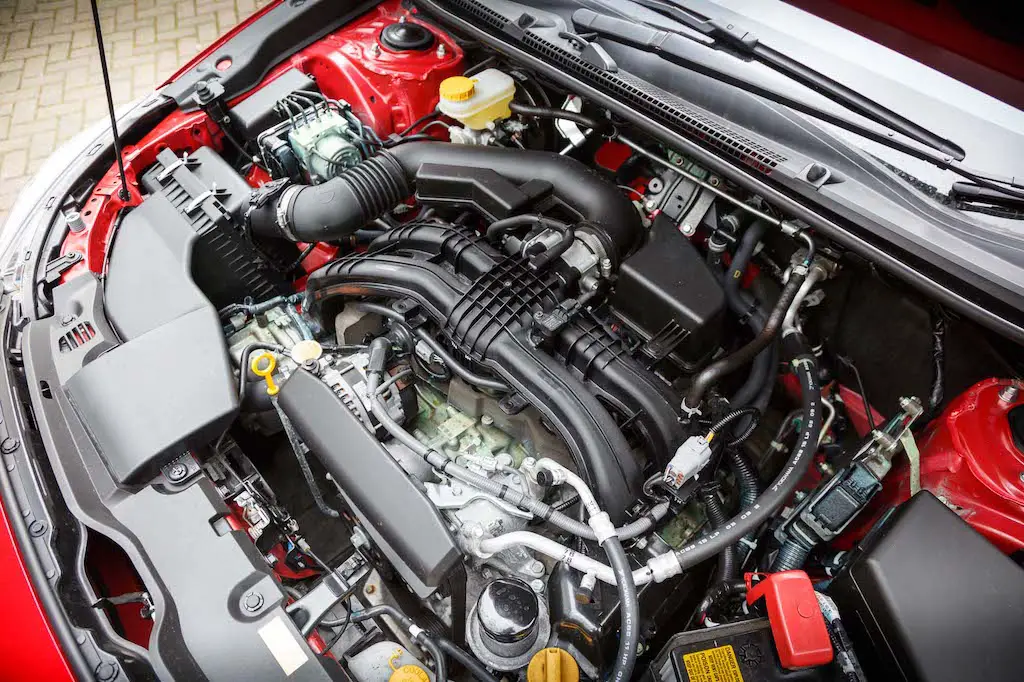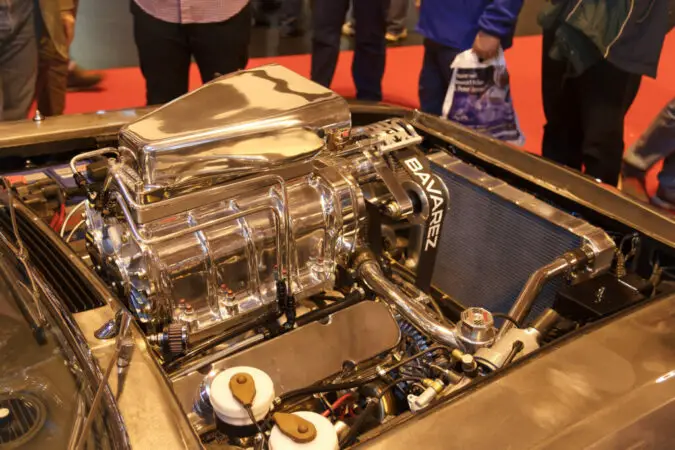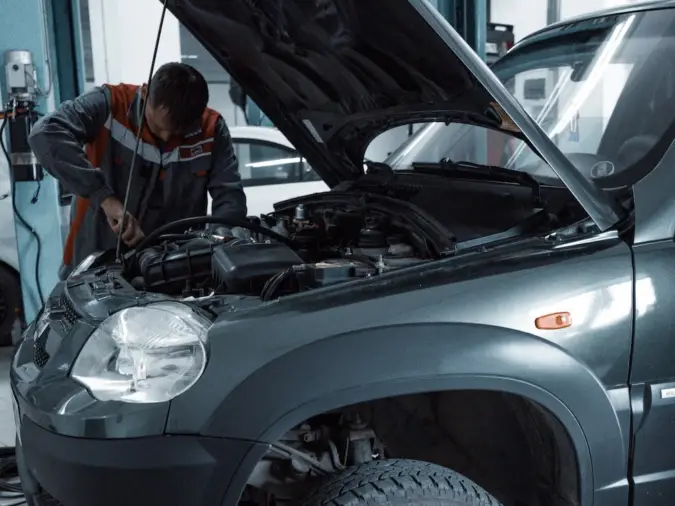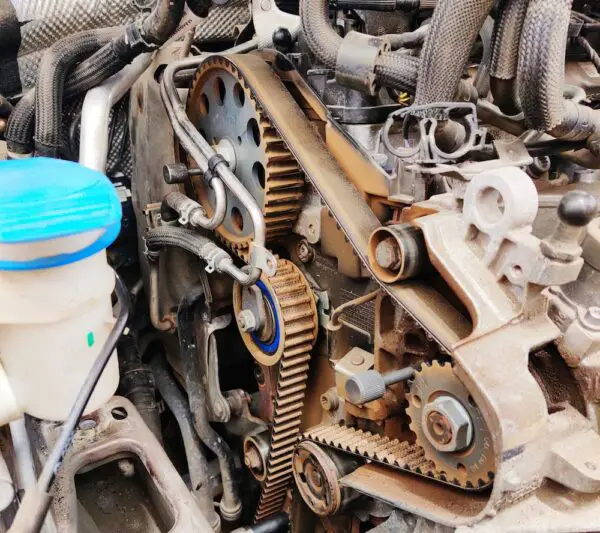A fragile object will probably get broken if you put it in a box and jiggle it. Even the box itself might be harmed by the object. The fragile item will remain still when the box is rocked, though, provided you secure it using rods and cushions to hold it in place. The function of a motor mount is pretty much the same.
No matter how quiet and smooth it drives, a gas-powered car still depends on an internal combustion engine to create tons of raw explosive power every minute. But then how do you not feel the side effects of your vehicle having such a potent furnace at its core? That is where motor mounts come into play.
The solution is that the vibrations from your engine are absorbed by a number of motor mounts in your car. Depending on the model and year of manufacture of a particular vehicle, the number of motor mounts may vary. Without motor mounts, the vibration would spread throughout the entire vehicle, making the passengers exceedingly uncomfortable.
Keep reading to learn how an engine mount functions, symptoms to watch out for if you think you might have bad engine mounts, and the typical price of replacing an engine mount.
- Types Of Motor Mounts
- Causes For A Bad Motor Mount
- Bad Motor Mount Symptoms
- Motor Mount Replacement
- Final Conclusion
- FAQs
Motor Mount
The internal combustion engine in your car weighs at least several hundred pounds. It rotates, vibrates, and shakes while you drive. If left to its own devices, it would collapse or damage the objects around it.
All vehicles have motor mounts placed to stabilize the engine. They stop neighboring components from being damaged by the engine’s natural vibrations and keep the occupants from feeling them.
Motor mounts are also called engine mounts. Each motor mount has two connections: one to the engine and one to the car’s body. Rubber or other similar materials are frequently used in motor mounts to prevent metal-to-metal contact between the engine and the vehicle’s body. Some engine mounts contain liquid to further reduce vibration. An engine mount with liquid within functions as a shock absorber.
Some automakers (like Toyota and Honda, for example) employ active vacuum-controlled engine mounts that adjust damping as necessary. In order to actively lessen engine vibration transmitted to the body, Porsche offers electromagnetic mounts. Let’s now look at the various types of motor mounts used by automakers in their automobiles.
Depending on the size and stability of the engine, many vehicles have three to four motor mounts. Due to how the engine is positioned in relation to the other automobile body components and vice versa, some vehicles may have four mounts. You can find these details in your car’s manual.
You might look around the equipment of your main engine and find a fourth or fifth mount. It could be the transmission mount. It is a separate component intended to hold the transmission in place even as it moves and shifts with shifting gears and torque levels.
Types Of Motor Mounts
1. Solid Rubber Motor Mounts
Solid rubber motor mounts are made of solid rubber and bolted using steel-backed plates to the engine, transmission, and chassis. The material combination permits mobility and flexibility while reducing system shocks. They can lengthen the lifespan of the motor and other vehicle components. This kind of engine mount is typically used in cars and trucks.
Solid rubber mounts are sturdy, they keep the engine in place, and effectively reduce vibration and noise at a reasonable cost. Regardless of quality, they will gradually start to tear and crack, especially when subjected to a strong load. This leads to generating more movement and a decline in performance.
Rubber motor mounts are the most prevalent, and they are frequently seen in economy cars, trucks, work vehicles, and older vehicles.
2. Hydraulic Motor Mounts
A fluid gel or liquid is used to fill hydraulic motor mounts, also known as hydro motor mounts. Engine vibrations are dampened and absorbed by hydraulic motor mounts before they reach the chassis. They are chosen in cars where a low degree of noise is required and their main usage is in motors that produce a lot of high and low-frequency vibration.
These can be tuned to offer better performance over a wider range of conditions than standard rubber engine mounts. Hence, these are typically chosen to offer optimum performance over a relatively narrow range of conditions.
Hydraulic motor mounts are less cost-effective because of their advanced components, which result in greater production costs and higher expenses. Fluid leaks and collapse have been known to occur with heavy use. However, this can be avoided by accurately assessing the circumstances and creating a mount of the highest caliber.
Some modern automobiles come standard with fluid-filled mounts. These are utilized in many mid-range and luxury sedans to further reduce engine vibration. Such mounts resemble shock absorbers in appearance.
3. Metal Motor Mounts
A metal motor mount establishes a solid, reliable connection between the engine and the chassis. This allows for a significant power transfer to the wheels, which continue to be rigid even while under stress. These engine mounts do, however, transfer the most vibration and noise because of the metal-on-metal connection.
4. Electronic (Active) Motor Mounts
Depending on the load and speed of the vehicle, electronic engine mounts are made to adjust the stiffness and damping properties of the mount to lessen noise and vibration.
Sensors keep an eye on this vehicle data and relay it to the control system. Engine vibrations can be reduced using a variety of control techniques. These include a vacuum actuator or a counter-shake device.
5. Polyurethane (PU) Motor Mounts
A more durable option compared to rubber engine mounts, polyurethane motor mounts combine the advantages of both rubber and solid steel engine mounts. These mounts tend to be more expensive but can improve performance and the way the road feels.
Additionally, they frequently have lower heat resistance, which might be problematic in an automobile application. Furthermore, PU is more difficult to attach to metal than rubber, particularly stainless steel.
Some heavy-duty vehicles and sports cars may have stiff polyurethane mounts. These can be better at absorbing vibrations from vigorous car movements even though they don’t absorb as much raw vibration as rubber mounts do.
What Causes A Bad Motor Mount
Motor mounts can occasionally malfunction and deteriorate because they are continually subjected to stress. Motor mounts’ materials may eventually deteriorate as a result of exposure to extreme heat, vibration, oxygen, and ozone.
For instance, the rubber used to make the mounts will gradually harden. Hardened rubber loses its ability to absorb vibration and ages more quickly. The body of your car may experience vibrations from your engine if your mounts aren’t functioning properly. They might even be present each time you start your car and go for a drive.
Motor mounts might eventually crack or completely fail if neglected. As you may anticipate, damaged motor mounts can cause a wide range of additional engine issues, including the following-
- Exhaust damage.
- Damage to wiring.
- Damage to the intake.
- Physical blunt damage to nearby components.
- Increased pressure and tension on the wheels and transmission.
Your motor mounts shouldn’t ever completely fail. If you allow broken motor mounts to worsen, the cost of your car repairs could drastically rise.
1. Improper Installation
It’s crucial to take your car to a reliable, experienced service facility with the necessary tools if your motor mounts need to be fixed or replaced. While not as expensive, taking your automobile to a less-than-reliable shop runs the risk of your mounts being installed incorrectly. This will cause them to fail or break down much more quickly.
Also, the engine mounts you buy from the manufacturer may occasionally, albeit infrequently, be worn out or broken. To learn whether the mounts you’re considering buying have been recalled, keep an eye out for any service bulletins.
2. Driving Style (Manual Transmission)
Being in charge of your vehicle is one of the best things about driving a stick. You specify where, when, and how to shift for it. You have the authority, and that tremendous authority entails enormous responsibility.
By pulling off the clutch, hitting the brakes, or over-revving the engine before takeoff, you run the risk of destroying your motor mounts. Driving in this manner significantly shortens the life of your motor mounts.
3. Oil/Fluid Leaks
Similar to how it can destroy rubber drive belts, oil, and other fluids that leak onto your mounts have the ability to eat them away. Or otherwise, they could compromise the rubber that makes them up, which could result in premature mount failure.
To avoid any cumulative mount deterioration, make sure to take your car to a reputable auto repair shop as soon as you notice an oil, transmission, or other liquid leaks in it (on top of getting the leak fixed).
Bad Motor Mount Symptoms
Engine mounts are necessary to protect the engine from harm and increase comfort. But what happens when you require new engine mounts? Do you also understand the signs of damaged engine mounts? Those vibrations could be the result of worn engine mounts. How do you tell whether your car’s engine mounts need to be replaced?
There are several ways to tell if your engine mounts need to be replaced. But here are some bad motor mount symptoms to determine when to replace motor mounts.
1. Increased Vibrations
Vibrations that become more intense when driving your car are one of the most typical indications of damaged engine mounts. A worn engine mount that may require replacement might be identified if you start your engine and notice that it is generating more noise and vibrations than usual.
An engine mount loses some of its anti-vibration capabilities if it is damaged. An increase in vibrations causes the engine to be noisier than usual. This can be quite harmful to an engine if it happens frequently.
2. Shaky Engine Start-Up
The engine may start with an extreme lurch that doesn’t feel or sound right. This is another of the most typical signs of worn engine mounts. This jolt frequently settles into a steady vibration, although you could also feel it when you turn the ignition off.
3. Bumpy Ride Quality
Changing gears on the attached transmission can frequently jolt a worn-out engine mount. Because the engine is working harder when moving at higher speeds, this jolt or thump may also be audible. Damaged engine mounts are frequently to blame when a machine doesn’t seem as smooth as usual.
4. Impact Noises
Failure of the engine mount results in noise from them. A worn engine mount frequently causes “clunks” and “bangs” in the area around it or inside the engine bay. This sound is caused by the engine moving more than usual and coming into touch with other parts. This might result in impact sounds that are fairly audible.
5. Visible Wear And Tear
The appearance of an engine mount’s metal component does vary with use. However, if you notice any substantial corrosion, cracks, or warps in the component, the rest of the mount is probably wearing down too quickly.
Depending on the severity of the cracks and the underlying reason, engine mount performance may be impacted if you observe any flaking or cracks in the rubber portion of the mount.
Engine mounts’ efficacy depends on their shape and form because any alterations to them can harm the engine. You should look into changing engine mounts as soon as you detect any of these symptoms.
Motor Mount Life
Since multiple variable factors can considerably affect a motor mount’s service life, there is typically no set plan for replacing them. They ought to survive for about 5-7 years on average, but it’s a good idea to have them checked frequently during every service, including standard oil changes.
Motor mounts are sometimes forgotten during car maintenance. But by replacing old, worn mounts, you can help maintain an engine that runs smoothly. This also gets rid of the annoying and noisy vibrations that are felt in the seat or the steering wheel.
Although you don’t have to repair all of the engine mounts at once, if you don’t, you should pay more attention to them. Because they’re probably the same age as the component you’re replacing.
As a result, you might need to act quickly since when one engine mount is destroyed, the other mounts are put under higher stress. This might hasten their own wear. Accordingly, depending on the extent of the damage, you could need to replace all of the engine mounts.
The engine mounts might survive for decades, if not the entire life of the automobile. It depends on your car and the materials utilized to manufacture them. However, it’s wise to have your motor mounts inspected about every seven years. You can stay on top of any maintenance concerns by checking your motor mounts before they become serious ones.
The gearbox mount on your car should last a lot longer than any motor mount. Before the vehicle is either completely rebuilt or demolished, you shouldn’t need to replace it.
Motor Mount Cost
It’s not surprising that there is a wide difference in pricing for various types of motor mounts given that motor mounts can be either quite basic or extremely sophisticated. You can use these figures as a starting point and guide if you’re wondering how much it ought to cost to replace motor mounts.
The expense of replacing your engine mounts can increase the longer you put off doing so after the symptoms appear. The simplest and most cost-effective solution is to prevent a failed engine mount scenario.
Motor Mount Replacement Cost
Depending on the make and type of the car, a very basic steel or rubber mount may cost as little as $10 to as much as $150. Complex hydraulic or active motor mounts will typically cost more; prices can start at over $50 and go up to $200.
Motor Mount Repair Cost
Depending on how accessible the motor mount is, replacement labor costs will vary. A mechanic may only need 30 minutes to change out the old mount and install the new one for a motor mount that is directly above the engine.
You might need to spend two or more hours trying to get access if the motor mount is hidden in the engine compartment. That equals a labor price per amount of between $100 and $450.
Motor Mount Replacement
Does it make sense to replace the engine mounts, particularly if the car is old? The answer is typically yes. Investing a little time and money now could help you avoid more problems and expenses in the future, similar to many preventative maintenance jobs.
Your entire engine may begin to bounce if the mount cracks and fails catastrophically as a result of neglecting to replace the motor mounts when necessary. This is one of the most extreme scenarios that can result from a defective engine mount.
When traveling at high speeds, this might cause the engine to damage some of its most fragile components colliding with each other. This could result in a tragic mishap that causes significant damage or even fatalities. Hence, it is vital to deal with this issue as soon as possible and the following are the steps to replace the motor mounts of a car-
- To prevent any electrical problems, always start by removing the negative wire from the battery.
- Additionally, you must adequately support the engine to ensure that it is suspended safely when the mount is removed.
- You may need to use a jack to raise the car, depending on which mount you are removing. Always use a set of jack stands to support the automobile when working on it.
- Remove the bolts connecting the engine to the motor mount and the motor mount to the chassis now that the engine is supported. Replace the old motor mount and, if the bolts are made of aluminum, the old bolts as well.
If you take the time and have the right equipment, changing your motor mounts is often a Saturday project. In some vehicles, you might need to remove pieces of the subframe or other engine bay components to access the mounts.
Motor Mount: In Conclusion…
To summarise, most cars feature three to four motor mounts. Each of them has the distinct and significant function of absorbing vibrations caused by the engine. In some cases, the weight of your car’s engine may also be supported by some motor mounts.
Although certain motor mounts may be filled with tiny vacuum chambers or shock-absorbing liquid, they are commonly constructed of rubber. Regardless, motor mounts can and do degrade over time. You should be aware of these indicators so you can replace or repair your motor mounts as soon as you notice any issues.
Depending on the size and specifications of your car, the cost to replace a cracked or broken mount might range from roughly $250 to $600. The cost of the motor mounts themselves, in terms of parts, ranges from $10 to $150.
The cost of the labor to accurately realign your engine and install these mounts exceeds the cost of the component parts. Depending on how difficult it is to reach the motor mount, budget between $100 and $450 for labor to replace it.
FAQs On Motor Mount
What Is A Motor Mount
Motor mounts, sometimes referred to as engine mounts, perform a straightforward yet crucial job in your car. They are the connection point between the engine and the chassis. Typically, they are made of rubber and metal.
How Much Is A Motor Mount
A very basic steel or rubber mount could cost as low as $10 to as much as $150, depending on the model and type of the car. Prices for complex hydraulic or active motor mounts can start at over $50 and go as high as $200.
What Does A Motor Mount Do
An engine mount’s main function is to anchor an engine in place. They also absorb any shocks and vibrations that may occur when the engine is running. Engine protection and occupant comfort are improved by using engine mounts and anti-vibration mounts.
What Does A Broken Motor Mount Feel Like
If the engine is visibly shifting and moving in the engine compartment, that is a very apparent symptom of a defective motor mount. When you accelerate quickly, corner aggressively, or come to a sudden halt, you probably feel it going forward, backward, or side to side.
How Much Does It Cost To Replace A Motor Mount
Depending on how challenging it would be for a repair to access your engine, replacing a motor mount may run you anywhere from $200 to $600. A bouncing or moving engine is one of the warning signals that your motor mounts are starting to fail.






